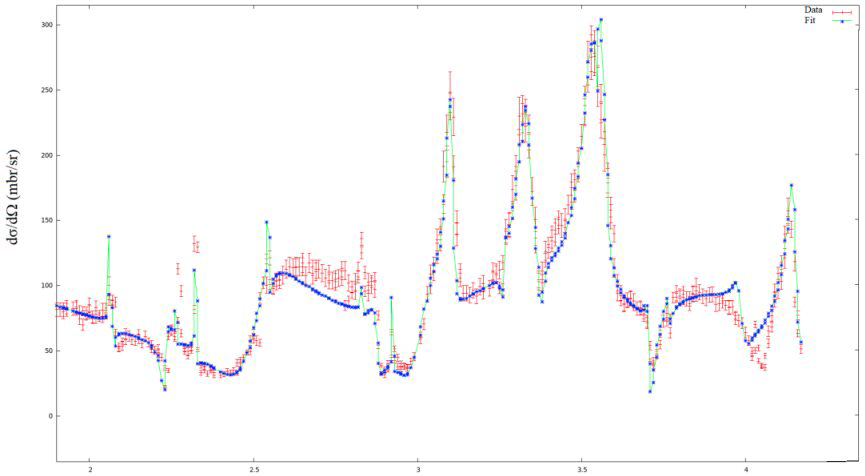Speaker
Description
Alpha cluster structure in 19F
Nauruzbayev D.K.1,3, Nurmukhanbetova A.K.1 , Goldberg V.Z. 2
1 Energetic Cosmos Laboratory,Nazarbayev University, Nur-Sultan, 010000,Kazakhstan,
2 Cyclotron Institute, Texas A&M University, College Station, Texas, USA
3 Saint Petersburg State University, Saint Petersburg, Russia
E-mail: anurmukhanbetova@nu.edu.kz
The nucleosynthesis of 19F was investigated over the past several years 1. The synthesis of fluorine occurs by 14N(α,γ)18F(β+)18O(p, α)15N(α,γ)19F reaction chain in the asymptotic giant branch stars [1-2]. For that reason, the studies of the abundance of 19F can be useful as a probe of stellar nucleosynthesis [1,3].
Several experimental groups also have been studied the properties of levels in 19F nuclei [1,4,5]. The aim of these studies was the knowledge of cluster structure in N>Z nuclei. Still, the information on the alpha cluster structure of 19F is scarce because of the experimental difficulties of the studies of elastic scattering of alpha particles at a gas target at low energy in the backward hemisphere [4].
We made the measurements of the 15N+α elastic scattering using the Thick Target Inverse Kinematic [6] method in a broad angular range including 180 degrees in c.m.s. at heavy ion accelerator DC-60 [7-8] (Nur-Sultan, Kazakhstan) and analyzed the available experimental data using R-matrix formalism [9]. This study presents a comprehensive analysis of the experimental data and reveals an interesting relation between level structure in 19F and 20Ne.
Fig.1. demonstrates the quality of the new fit for θc.m. = 149.5 [4] in the energy range 2.0-4.4 MeV.

Acknowledgments:
Authors acknowledge financial support from the Nazarbayev University [small grant number 090118FD5346], the Ministry of Education and Science of the Republic of Kazakhstan [state-targeted program number BR05236454] and [young scientists’ research grant number AP08052268].Nauruzbayev D.K. is thankful for support from RFBR, research project No. 20-02-00295
References:
1 M. La Cognata and et.al. Phys. Rev. C 99, 034301 (2019).
[2] A. Jorissen, V. V. Smith, and D. L. Lambert, Astron. Astrophys. 261, 164 (1992).
[3] M. Lugaro, C. Ugalde, A. I. Karakas, J. Görres, M. Wiescher,J. C. Lattanzio, and R. C. Cannon, Astrophys. J. 615, 934 (2004).
[4] H. Smotrich, K. W. Jones, L. C. McDermott, and R. E. Benenson, Phys. Rev. 122, 232 (1961).
[5] D. W. Bardayan, R. L. Kozub, and M. S. Smith.Phys. Rev. C 71, 018801(2005).
[6] K. P. Artemov and et.al. Yad. Fiz. 52, 634 (1990) [Sov. J. Nucl. Phys. 52, 408 (1990)].
[7] D. K. Nauruzbayev and et. al. Physical Review C 96, 014322 (2017)
[8] A.K. Nurmukhanbetova and et.al. Phys. Rev. C 100, 062802(R)
[9] Lane A. M. and Thomas R. G. Rev. Mod. Phys. 30 257,1958.